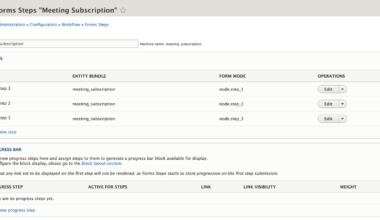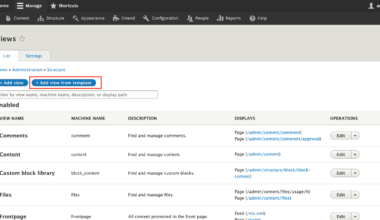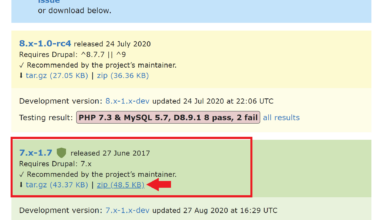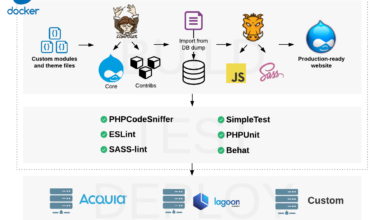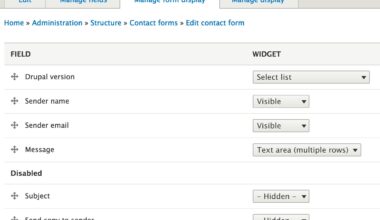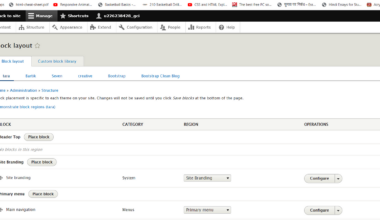Introduction to Drupal and AngularJS
As a web developer, you might have heard of Drupal and AngularJS. Drupal is a popular content management system (CMS) used to create and manage websites, while AngularJS is a JavaScript framework used to build dynamic web applications. Both Drupal and AngularJS have their strengths and weaknesses, but when used together, they can create a powerful and flexible web development platform.
Drupal is known for its scalability, security, and extensibility. It provides a solid foundation for building websites with features like user management, content creation, and administration. On the other hand, AngularJS is known for its ability to create dynamic, single-page applications that can handle complex user interactions. When combined, Drupal and AngularJS can create a web development platform that is both powerful and flexible.
One of the main benefits of using Drupal and AngularJS together is the ability to create dynamic, responsive websites that can handle complex user interactions. AngularJS provides a powerful framework for building interactive user interfaces, while Drupal provides a solid foundation for managing content and user data. By combining these two technologies, you can create a web development platform that is both powerful and flexible.
In the next section, we will explore the benefits of combining Drupal and AngularJS in more detail. We will also discuss how to integrate AngularJS with Drupal, and provide examples of websites that are currently using this powerful combination.
Benefits of combining Drupal and AngularJS
There are several benefits to combining Drupal and AngularJS in your web development projects. Here are some of the key advantages:
1.
Improved User Experience:
AngularJS provides a powerful framework for building dynamic user interfaces that can handle complex user interactions. By integrating AngularJS with Drupal, you can create websites that provide a seamless, responsive user experience.
2.
Flexible Content Management:
Drupal is a robust CMS that provides a scalable and extensible platform for managing content. By combining Drupal with AngularJS, you can create a flexible content management system that can handle a wide range of content types and user interactions.
3.
Better Performance:
AngularJS is designed to create fast and responsive web applications. By integrating AngularJS with Drupal, you can improve the performance of your website and create a faster, more responsive user experience.
4.
Easier Development:
AngularJS provides a powerful framework for creating web applications, while Drupal provides a solid foundation for managing content and user data. By combining these two technologies, you can simplify the development process and create web applications more quickly and efficiently.
5.
Scalability:
Drupal is known for its scalability, and AngularJS provides a powerful framework for building scalable web applications. By combining these two technologies, you can create a web development platform that can handle the needs of even the largest websites and applications.
Overall, combining Drupal and AngularJS provides a powerful platform for creating dynamic, responsive web applications. By taking advantage of the strengths of both technologies, you can create web applications that provide a seamless, intuitive user experience while remaining flexible and scalable. In the next section, we will explore how to integrate AngularJS with Drupal.
How to Integrate AngularJS with Drupal
Integrating AngularJS with Drupal is a straightforward process that requires some basic knowledge of both technologies. Here are the steps to follow:
1. Install AngularJS:
The first step is to install AngularJS on your Drupal website. You can do this by downloading the AngularJS library from
https://angularjs.org/
and adding it to your Drupal website’s codebase.
2. Create an AngularJS Module:
Next, you need to create an AngularJS module that will handle the interactions between your Drupal website and the front-end user interface. You can do this by creating a new JavaScript file and adding the following code:
var myApp = angular.module('myApp', []);
This creates a new AngularJS module called ‘myApp’.
3. Define AngularJS Controllers:
Now that you have created an AngularJS module, you can define controllers that will handle the interactions between the user interface and the Drupal website. You can do this by creating a new JavaScript file and adding the following code:
myApp.controller('myController', function($scope) {
// Controller code goes here
});
This creates a new AngularJS controller called ‘myController’.
4. Use Drupal’s RESTful Web Services:
Drupal provides a RESTful Web Services module that allows you to expose Drupal content to external applications. You can use this module to create a RESTful API that AngularJS can interact with. To do this, you need to enable the RESTful Web Services module in Drupal and configure the necessary settings.
5. Make HTTP Requests:
Finally, you can use AngularJS’s built-in $http service to make HTTP requests to the Drupal RESTful API and retrieve data from Drupal. You can do this by adding the following code to your AngularJS controller:
myApp.controller('myController', function($scope, $http) {
$http.get('http://mydrupalwebsite.com/api/mycontent').then(function(response) {
$scope.myContent = response.data;
});
});
This makes an HTTP GET request to the Drupal website’s RESTful API and retrieves data from the ‘mycontent’ endpoint.
By following these steps, you can easily integrate AngularJS with Drupal and create dynamic, responsive websites that provide a seamless user experience. In the next section, we will look
Examples of Websites Using Drupal and AngularJS
Drupal and AngularJS are powerful web development technologies that can be used together to create dynamic, responsive websites. Here are some examples of websites that are currently using this powerful combination:
1.
Weather.com:
Weather.com is a popular website that provides up-to-date weather information for locations around the world. It uses Drupal as its CMS and AngularJS to create a dynamic user interface that allows users to interact with the website and retrieve weather information for their location.
2.
Peace Corps:
The Peace Corps website is built using Drupal and AngularJS. It provides information about the Peace Corps organization and allows users to search for volunteer opportunities and apply online.
3.
PBS Kids:
PBS Kids is a children’s website that provides educational games, videos, and activities. It uses Drupal as its CMS and AngularJS to create a dynamic, interactive user interface that engages children and provides a fun learning experience.
4.
Stanford Graduate School of Education:
The Stanford Graduate School of Education website is built using Drupal and AngularJS. It provides information about the school’s programs and research, and allows users to search for courses and apply online.
5.
World Wildlife Fund:
The World Wildlife Fund website is built using Drupal and AngularJS. It provides information about the organization’s conservation efforts and allows users to make donations and get involved with the organization’s mission.
These are just a few examples of websites that are currently using Drupal and AngularJS to create dynamic, responsive user interfaces. By using these powerful technologies together, web developers can create websites that provide a seamless, intuitive user experience while remaining flexible and scalable.
In the final section of this article, we will discuss the future of Drupal and AngularJS integration and how this powerful combination can continue to evolve in the years to come.
Final Thought: The Future of Drupal and AngularJS Integration
The combination of Drupal and AngularJS provides a powerful platform for creating dynamic, responsive web applications. As web development technologies continue to evolve, so too will the integration of Drupal and AngularJS.
One of the most exciting developments in the future of Drupal and AngularJS integration is the use of Drupal as a headless CMS. A headless CMS is a content management system that separates the content management backend from the front-end user interface. This allows developers to use any front-end technology they choose, including AngularJS.
With Drupal as a headless CMS, developers can create dynamic, responsive web applications that provide a seamless user experience. By using AngularJS as the front-end technology, developers can create interactive user interfaces that provide a fast, responsive experience for users.
Another exciting development in the future of Drupal and AngularJS integration is the use of Drupal as a data source for AngularJS applications. With Drupal’s powerful content management capabilities, developers can create rich data sources that AngularJS applications can use to create dynamic user interfaces.
As the web development landscape continues to evolve, Drupal and AngularJS will continue to be at the forefront of web development technologies. By using these powerful technologies together, developers can create web applications that are both powerful and flexible.
In conclusion, the future of Drupal and AngularJS integration looks bright. As developers continue to push the boundaries of what is possible with these technologies, we can expect to see even more dynamic, responsive web applications that provide a seamless user experience. If you’re a web developer looking to create powerful, flexible web applications, Drupal and AngularJS are a winning combination.












